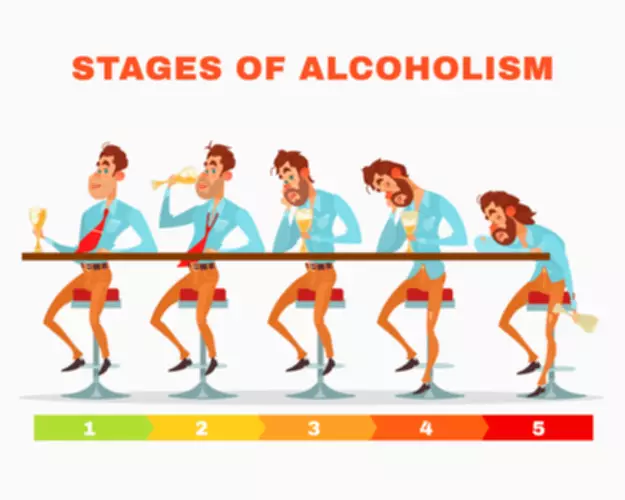
Treatment plans should be culturally appropriate, consider the family and community context, and be developed in partnership with families and individuals with lived experience of FASD234,235. Alcohol enhances GABAA receptor-mediated depolarization of migrating GABAergic interneurons through activation of L-type voltage-gated calcium channels, thereby accelerating tangential migration63. Dysfunction of GABAergic interneurons may impair inhibitory control of brain networks. In mice, PAE during corticogenesis also disrupts radial migration and pyramidal cell development in the somatosensory cortex, which could be linked to decreased tactile sensitivity during adolescence140. The authors affirm that human research participants provided informed consent, for publication of the images in Figure 4.
- Fetal Alcohol Spectrum Disorders (FASD) includes a continuum of disorders that occur in children as a result of their mothers’ consumption of alcohol during pregnancy.
- These studies are limited by selection bias and are based on cohorts with severe deficits rather than population-based cohorts receiving adequate support267,270.
- Moreover, alcohol stimulates the production of pro-inflammatory cytokines (such as IL-1β and TNF) and chemokines (such as CCL2 and CXCL1) through enduring epigenetic modifications that sustain a chronic neuroinflammatory response119 (Fig. 5).
Drug Alcohol Depend
Fetal alcohol syndrome (FAS) is the most clinically recognizable form of FASD and is characterized by a pattern of minor facial anomalies, prenatal and postnatal growth retardation, and functional or structural central nervous system (CNS) abnormalities. The consequences are lifelong, and the behavioral and learning difficulties are often greater than the degree of neurocognitive impairment. Alcoholrelated neurodevelopmental disorder also is a clinically recognizable diagnosis in the continuum of FASD and describes the clinical outcome when the facial features typical of FAS are absent.

Fetal Alcohol Spectrum Disorders
- Early diagnosis and a strength-based management approach will optimize health outcomes.
- Further understanding of the pathophysiology underpinning the teratogenic and neurotoxic effects of PAE is required to inform prevention and management.
- When indicated, genetic testing should include chromosome microarray analysis184,185 and exclusion of Fragile X syndrome186 as a minimum, and whole-exome sequencing should be performed if other genetic pathologies due to point mutations are suspected10,187.
- The effects of alcohol on the placenta contribute to intrauterine growth retardation and adverse neurodevelopmental outcomes.
- Parents might learn different routines and rules that can help their child adapt to different situations.
Epigenetic changes are chemical modifications (methylation or acetylation) to DNA and surrounding histones that influence gene expression and often occur in response to environmental exposures118,119. Normal development depends on numerous epigenetic changes in embryonic stem cells that facilitate their transition to fully differentiated and functional cell lineages such as neurons, muscle and fat cells120. Alcohol can disrupt development by inducing DNA methylation and histone acetylation in gene clusters and altering gene expression121. Epigenetic alterations resulting from PAE have been observed in animal models and humans, and these changes may be lifelong and inherited by future generations118,122,123,124. A pattern of DNA methylation in buccal epithelial cells was reasonably accurate (positive predictive value 90%; negative predictive value 78.6%) in discriminating children with FASD from typically developing controls or children with autism spectrum disorders125. Large replication studies in different populations are required before this approach might be considered for diagnostic purposes.

Genes associated with PAE
Fetal alcohol syndrome is the most severe condition within a group of conditions called fetal alcohol spectrum disorders (FASDs). Management involves multiple service providers and changing interventions across the lifespan. Specialized medical or surgical interventions may be required for congenital anomalies and accompanying comorbidities.
Cognitive deficits and behavioral anomalies such as attention-deficit/hyperactivity disorder typically become more apparent in school-aged children with FASD and usually persist into adolescence and adulthood, whereas facial findings among the subset with FAS may become less characteristic. These data document the frequency of a number of specific structural defects that have not traditionally been considered necessary for the diagnosis of FAS in a group of children diagnosed with FAS relative to those classified as Deferred or No FAS. There are no exact statistics of how many people have fetal alcohol spectrum disorder (FASD). It can sometimes be difficult to diagnose a drunken baby syndrome person with FASD because of the variety of symptoms and spectrum of severity. Also, not all people who drink while pregnant feel comfortable talking to their healthcare provider. This means that some people with mild symptoms of FASD might never be diagnosed.
- Fetal alcohol syndrome is the most severe condition within a group of conditions called fetal alcohol spectrum disorders (FASDs).
- These disorders are the legacy of readily available alcohol and societal tolerance to its widespread use, including during pregnancy.
- 7 illustrates one approach that could be linked to national policy to address diverse aspects of population-based prevention of FASD.
- According to the Centers for Disease Control and Prevention, the percentage of pregnant women who consume alcohol increased from 7.6% in 2012 to 10.2% in 2015, and the number of pregnant women reporting binge drinking (at least four alcoholic beverages at once) increased from 1.4% to 3.1%.
- Parental training is meant to help parents to help families cope with behavioral, educational and social challenges.
- Large replication studies in different populations are required before this approach might be considered for diagnostic purposes.